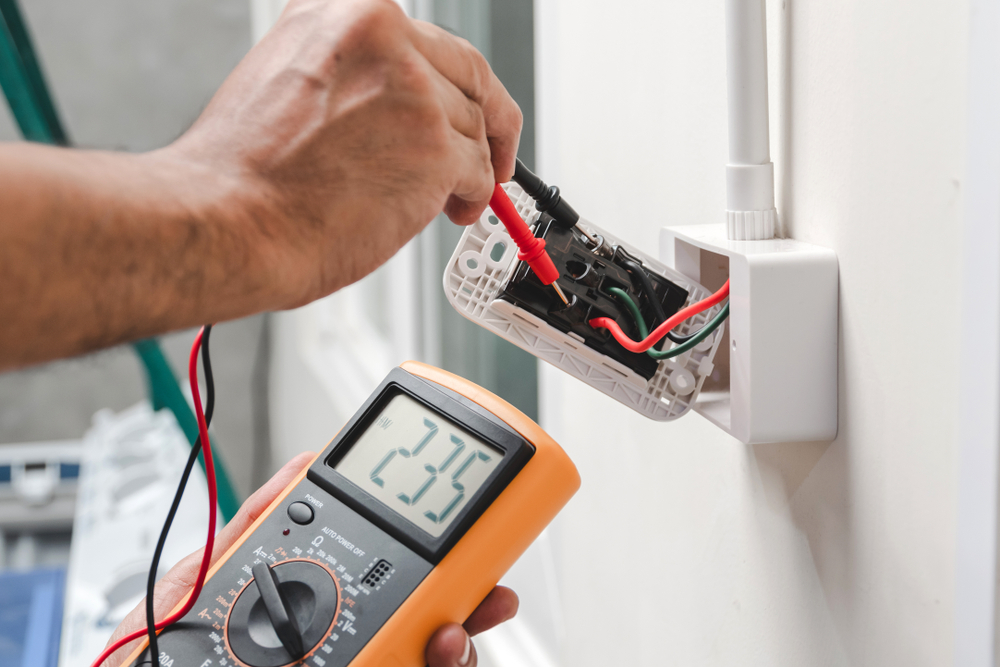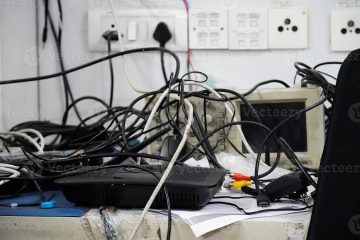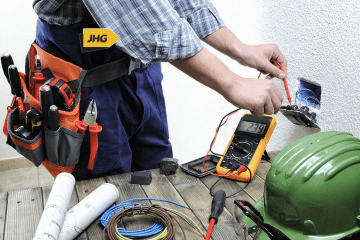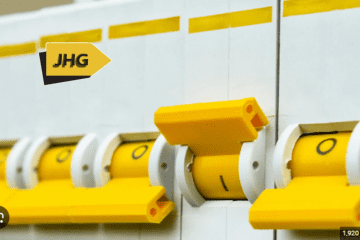Electrical systems are complex networks that can experience faults at any time due to power surges, equipment malfunctions, or even unpredictable natural occurrences like lightning strikes. These faults can pose significant hazards to anyone handling electrical equipment, as they create a direct pathway for current to flow into unintended areas, including the human body or metallic objects.
At Just HardRich Global Resources Limited, we are dedicated to ensuring electrical safety through high-quality earthing solutions. As the choicest Electrical Power and Control Engineering Company in Nigeria, we aim to provide innovative, practical, and efficient earthing systems that safeguard lives, property, and equipment.
One critical aspect of maintaining electrical safety is managing earth resistance effectively. In this blog post, we will explore what earth resistance is, its importance, how it is measured, and the tools and strategies used to reduce it.
What is Earth Resistance?
Earth resistance refers to the resistance of the earth to the passage of electric current. In simpler terms, it measures how well the soil can conduct electrical current to dissipate it safely into the ground. The resistance of the earth depends on various factors, such as soil composition, moisture content, temperature, and the depth of the earthing electrode.
Proper earthing ensures that fault currents or leakage currents are directed safely into the ground, preventing electrical shock, equipment damage, and fire hazards. At Just HardRich Global Resources Limited, we understand the science behind earthing and provide tailor-made solutions to meet the unique soil resistivity and safety requirements of different environments in Nigeria.
How is Earth Resistance Measured?
The process of measuring earth resistance begins with setting up earthing connections, typically involving the burial of earth electrodes near the structure or equipment that requires protection. These electrodes are often made from materials like copper, galvanized iron, or steel, chosen based on factors like soil resistivity and the specific requirements of the electrical system.
The accuracy of earth resistance measurements depends on factors such as:
- Soil Composition: Sandy or rocky soils typically have higher resistance, while clay soils with high moisture content have lower resistance.
- Moisture Content: The presence of water in the soil significantly lowers resistivity, enhancing the effectiveness of earthing systems.
- Temperature: Extreme heat can dry out soil, increasing its resistance, while cooler temperatures tend to improve conductivity.
- Electrode Depth: The deeper the electrode is buried, the better it can access moist, conductive soil layers.
Methods of Measuring Earth Resistance
Several methods are used to measure earth resistance, each suited to different scenarios. Below are the key methods employed in the field:
1. Four-Point Method (Wenner Method)
This method involves using four electrodes driven into the ground at equal distances along a straight line. The current flows between the two outer electrodes, while the potential difference is measured between the two inner electrodes. The resistivity of the soil can then be calculated based on the voltage and current readings.
The Wenner method is particularly useful for detailed soil resistivity surveys, making it ideal for designing large earthing systems like those for substations or industrial plants.
2. Three-Terminal Method (Fall of Potential Method)
The fall of potential method is one of the most reliable and widely used methods for measuring earth resistance. It involves placing two test electrodes, a current electrode and a potential electrode, at specific distances from the earthing system. By applying Ohm’s law (Voltage = Current × Resistance), the earth resistance can be calculated accurately.
At Just HardRich Global Resources Limited, we use state-of-the-art tools and techniques to ensure precise measurements, offering our clients confidence in the safety and reliability of their electrical systems.
3. Slope Method
The slope method is ideal for measuring the earth resistance of large and complex earthing systems, such as those used in power plants and transmission lines. It involves taking multiple resistance readings at varying distances and plotting them to determine the optimal resistance value.
This method is particularly effective in environments with challenging terrain or large grounding networks.
4. Star-Delta Method
The star-delta method uses three test electrodes arranged in an equilateral triangle around the earthing system. This technique is especially beneficial in rocky or high-resistivity soils where placing test electrodes can be difficult.
Innovative Tools for Earth Resistance Measurement
Modern electrical engineering has witnessed the development of advanced tools and equipment to simplify and improve the accuracy of earth resistance measurements. Some of these include:
- Digital Earth Resistance Testers: These devices provide precise readings and are easy to use in various field conditions.
- Clamp-On Testers: These allow for non-intrusive testing of earth resistance without disconnecting the grounding system.
- Multifunction Testers: These tools combine earth resistance measurement with other essential electrical testing capabilities, saving time and effort.
At Just HardRich Global Resources Limited, we integrate these cutting-edge tools into our services, ensuring our clients benefit from the best solutions available in the industry.
How to Reduce Earth Resistance
Reducing earth resistance is critical for ensuring the effectiveness of earthing systems. Here are some proven strategies:
- Maintaining Soil Moisture: Regularly watering the earthing area can help maintain low soil resistivity.
- Increasing Electrode Depth: Driving the electrode deeper into the ground allows it to reach more conductive soil layers.
- Using Earthing Compounds: Adding materials like salt, coal, bentonite, or marconite around the electrode can improve conductivity.
- Expanding the Contact Area: Using thicker or multiple electrodes can enhance the dissipation of fault currents.
These methods, coupled with routine inspections and maintenance, ensure long-term safety and reliability.
The Importance of Regular Inspections
An earthing system is not a one-time installation but requires regular checks to maintain its effectiveness. Annual inspections are recommended to verify that all connections are intact and that resistance values remain within acceptable limits.
At Just HardRich Global Resources Limited, we offer comprehensive maintenance services to keep your earthing systems functioning optimally.
Conclusion
Understanding and managing earth resistance is fundamental to the safety of any electrical system. Whether it’s a residential setup, industrial complex, or power station, proper earthing ensures that fault currents are safely dissipated, protecting people and equipment.
As the choicest Electrical Power and Control Engineering Company in Nigeria, Just HardRich Global Resources Limited is committed to delivering reliable, innovative, and cost-effective earthing solutions tailored to the unique needs of our clients.
Stay connected with us for more expert insights into electrical safety and engineering trends. For inquiries or professional consultations, contact Just HardRich Global Resources Limited today.




